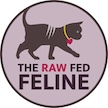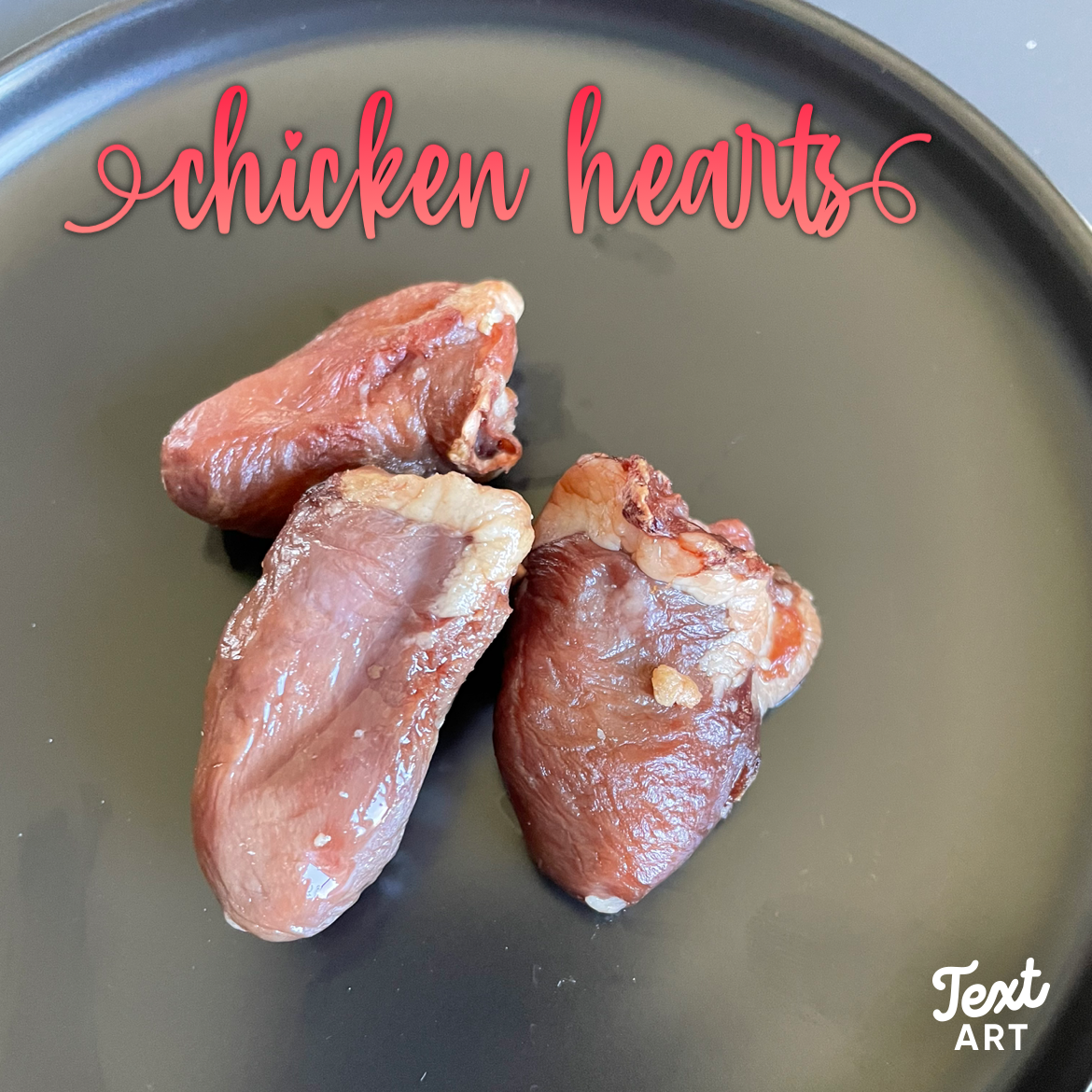Why am I writing a love letter to chicken hearts, you ask? Well, for one, because Valentine’s Day is around the corner, so it seemed fitting. Seriously though, because including chicken hearts in your raw fed feline’s diet is a really great idea.
Hearts are included in a raw diet mainly for their taurine content. Taurine is one of the essential amino acids for cats. It is important for eye and heart health, bile acid production, and reproduction. Cats, unlike dogs, cannot make taurine on their own. It must be supplied by their diets. This is why it is considered an essential amino acid for cats.
What impacts the need for taurine
One reason that cats need taurine supplied by the diet is because they are not great at a particular recycling process. As stated above, taurine is involved in the production of bile acid in the liver. In many mammals, the bile salt is recycled back into the liver for future acid production. However, cats do not have a complete recycling of bile salt, so most of it is lost in the feces. Consequently, cats have a continuous need for taurine since this recycling process is insufficient.
The fiber content of foods can also impact the need for taurine in the diet. An increased amount of fiber leads to more taurine loss in the feces. The fiber binds with the bile salt, which further interferes in that aforementioned recycling process. Increased fiber in the diet means more taurine will need to be added to compensate for this increased loss.
Cooked food can also increase taurine demands. Proteins that have been damaged by the cooking process will increase the amount of bacteria in the intestines that degrade taurine. Poor quality, less digestible proteins will also increase the need for bile acid, which furthers the need for additional taurine.
Lastly, ground meats have more surface area exposed to the air, which decreases the amount of available taurine due to oxidation. If feeding predominantly ground raw meats, you want to account for this loss and provide additional taurine in the diet. Feeding whole pieces of meat, rather than ground, preserves more of the taurine in the meat, thus having more taurine available for the body.
Where to find taurine
Taurine is found mainly in hard working muscles, seafood, and whole prey. Plant foods are not a source of taurine. Muscles from smaller animals have more taurine content than those of larger animals. Think about how hard the muscles of a little mouse work to move as opposed to a large cow; or the tiny heart of a hummingbird in contrast to the heart of a pig. The smaller the muscle, the faster it contracts to produce the needed movement.
Muscular organs
Hearts beat continuously for obvious reasons, and so it is one of the hardest working muscles in the body. This is where my love for chicken hearts comes into the story. Chicken hearts have abundant taurine in them. Chicken hearts have 1179mg taurine per kg. In contrast, beef hearts have only 652mg of taurine per kg. The smaller the heart, the more taurine it will contain.
Tongue is another muscle meat that has loads of taurine. A cow chews its cud constantly, so this is a very hard working muscle. I find it harder to source and work with beef tongue, which is why my love letter is to the chicken heart. Chicken hearts are easy for me to source and easy to work with. They require no cutting, prepping, etc. I just feed them as is. They are a perfect size for cats.

Muscle meat
Dark poultry meats have substantially more taurine content than light meats. Dark meats are typically those of the thighs and wings whereas lighter meats are breast cuts. For example, dark chicken meat has 1690mg taurine per kg in contrast to chicken breast, which has just 159mg per kg of taurine. The dark leg meat of duck has 1780mg per kg of taurine. Turkey breast can have as little as 70mg per kg. As you can see, feeding dark poultry meat is a great way to provide taurine in the diet, too.
All meat has some taurine in it, but the amount of taurine can vary quite a bit. As mentioned, larger animals’ skeletal muscles don’t provide as much in comparison to the muscles of smaller animals. For example, pork loin has 610mg per kg. Leg of lamb only 473mg per kg. These meats are great for other nutrients, but not as major suppliers of taurine.
fish & seafood
Fish and seafood have a lot of taurine as well since they are animals in constant motion. So when you provide some whole fish or seafood in the diet, you are also supplying taurine. For example, mackerel has 2070mg, salmon has 1300mg, and oysters have up to 3960mg of taurine per kg.
Be sure to add chicken hearts & dark meats
When feeding a prey model raw diet (PMR), 20% of the meat portion of the diet can be fed as muscular organs. I include hearts in every batch of Hazel’s PMR food. I typically use chicken, hence my love and appreciation for them, but I will also use duck and turkey when available for variety. Chicken and duck hearts are easy for me to find at local Asian markets. Walmart sells chicken hearts and gizzards packaged together. Online raw food suppliers carry hearts from all kinds of animals.
Including dark poultry meats and pieces of meat, rather than ground, will also help supply adequate taurine in your cat’s diet. Whole prey animals are a fantastic source of taurine for your cat as well. Check out my last post about whole prey feeding for more information.
When thawing meat, you may have noticed that there is a red liquid that remains. This liquid is called myoglobin. Taurine is water soluble, so when the meat thaws, some of the taurine will be in the myoglobin. Don’t toss this out! Pour that myoglobin in your cat’s food to retain the taurine.
Final notes on chicken hearts (and taurine)
Just to note, rabbit, while a popular meat with many cats, is particularly low in taurine. Taurine supplementation would be required if feeding a rabbit heavy diet. But you know how I love variety in cats’ diets, right? Feeding a variety of meats and muscle meats will provide adequate amounts of taurine and then some. Any extra taurine not needed by your cat’s body will be excreted in the urine. There is no risk of toxicity with taurine.
Any commercial raw foods and meat completers include taurine either by supplement or ingredient. You can still add some chicken hearts as treats for fun and variety in any cat’s diet.
So there you have it. My love letter to chicken hearts and its easy supply of taurine for a raw fed feline’s diet. See if you might fall in love with chicken hearts, too!
Taurine information from this study.


